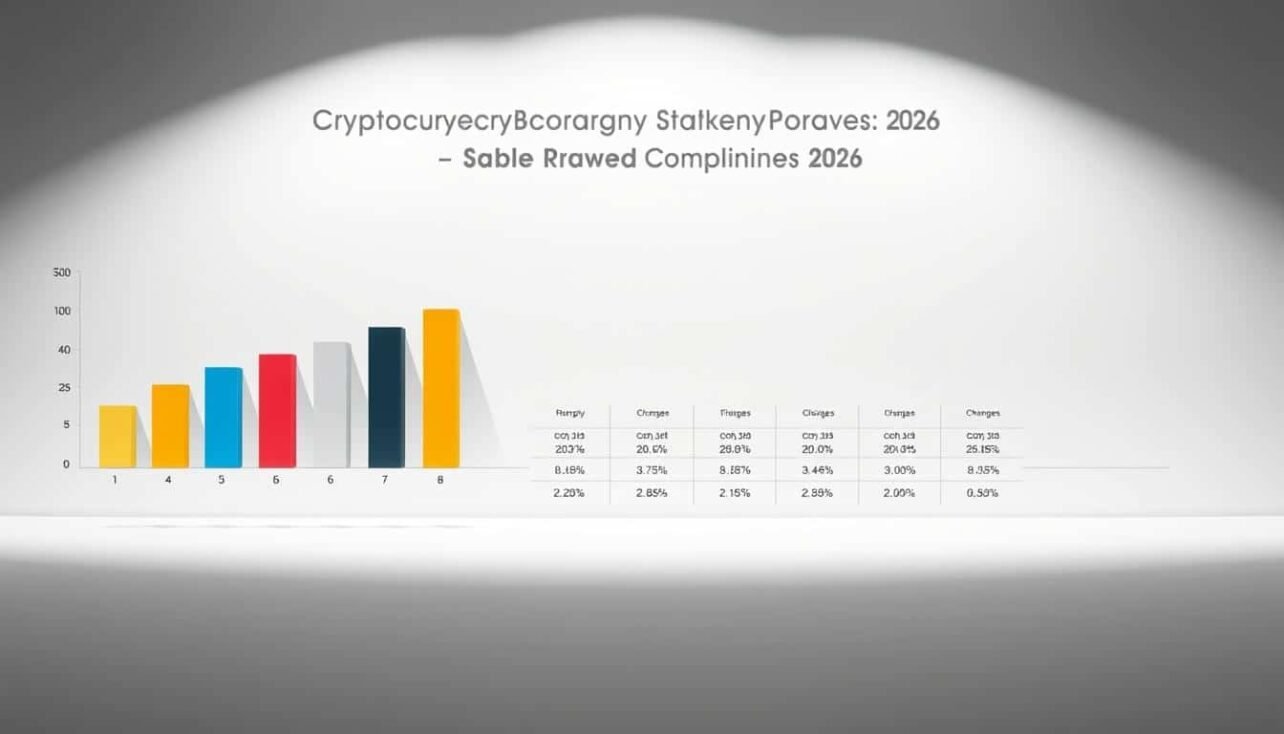This guide helps U.S. investors evaluate staking platforms and options to earn passive income while understanding trade-offs. It outlines how to judge reward realism, liquidity, risk controls, and compliance. You’ll see practical flows for wallets, DeFi platforms, and exchanges.
Staking secures PoS networks and aligns incentives through slashing, which can cut misbehaving validators’ stakes. That makes validator quality, custody models, and audits central to any platform review. We highlight leading products like Lido, Jito, EigenLayer, Binance Earn, and Ethena as real-world examples.
Our method compares APY versus real yield, validator sets, lock-ups, fees, and program risks across liquid staking LSTs, restaking marketplaces, centralized convenience products, and stablecoin-yield designs. The 2026 angle stresses restaking and derivatives-backed yields that affect APYs and liquidity.
Outcome: a practical, U.S.-focused framework to pick platforms and options that match your risk tolerance and income goals while prioritizing network security and transparency.
What users in the United States want from staking in 2026
U.S. users want simple, transparent paths to earn passive income that fit mobile and tax workflows.
Ease of use matters: wallets and exchanges must show clear minimums, cooldown timelines, and custody models. Many prefer platforms such as Coinbase, Kraken, and Binance for one-click onboarding.

Liquidity ranks high. People want liquid staking tokens or quick redemptions so their assets stay productive in DeFi and broader blockchain activities.
Security and trust drive choice. Users expect visible validator lists, audits, custody partners, and insurance options before they delegate tokens.
- Clarity: plain-language APY, fees, and net outcomes after potential slashing.
- Accessibility: mobile-first flows, automated distributions, and clear onboarding.
- Tax readiness: statements that integrate with U.S. reporting tools.
| Priority | What users expect | Real-world example |
|---|---|---|
| Clarity | Transparent APY, compounding cadence, fee breakdown | Coinbase clear staking disclosures |
| Liquidity | Liquid tokens or short cooldowns for redeployment | Lido and Jito liquid staking options |
| Security | Audits, validator transparency, custody controls | Kraken custody and audit reports |
How we evaluate staking platforms, rewards, and risks
We rate platforms by how clearly they turn headline APYs into real, withdrawable returns for users. That starts with a check of fees, compounding cadence, and whether yields come from native issuance, MEV, or restaking incentives.

APY versus real yield: compounding, sources, and sustainability
Headline APY can mislead. Net returns depend on fee splits (for example, Lido’s 10% reward share), compounding frequency, and how MEV proceeds are allocated (as Jito does on Solana).
We separate yield sources: protocol issuance, MEV auctions, restaking income (EigenLayer), and derivatives spreads. Each source has different sustainability and volatility.
Security stack: validators, custody, audits, and slashing protection
We assess validator quality, custody model, and smart contracts audits. Platforms that publish node lists, bug-bounty results, and audit reports score higher for network security and operational reliability.
Slashing policies, client diversity, and on-chain governance are judged for how they align validator incentives and limit systemic risk.
Liquidity and flexibility: lock-ups, cooldowns, and liquid staking tokens
Liquidity matters for U.S. users who want capital efficiency. We check lock-up terms, cooldown queues, and availability of liquid staking tokens like stETH or JitoSOL.
Transparent fee disclosure, clear distribution schedules, and documented processes make the staking process easier to use and to report for taxes.
| Factor | What we check | Example |
|---|---|---|
| Yield sources | Issuance, MEV, restaking, derivatives | Jito (MEV), EigenLayer (restaking) |
| Security | Audits, custody, validators, slashing | Lido audits, DAO governance |
| Liquidity | Cooldowns, LST availability, redemption speed | stETH liquidity in DeFi |
Cryptocurrency Staking Rewards Comparison 2026: category winners and key takeaways
Investors increasingly pick solutions that turn staked tokens into usable assets without sacrificing network security. That trade-off defines the category winners below and what U.S. users should watch when they seek passive income.

Highest liquidity potential: liquid staking and restaking picks
Lido leads for multi-chain liquid staking with stETH integrations, open-source audited contracts, and a clear 10% fee split.
Jito on Solana boosts yield via MEV-aware execution for JitoSOL, while EigenLayer enables restaking to extend utility and pooled security for AVSs.
Best centralized convenience: exchanges with broad asset support
Binance Earn wins on breadth (BETH, flexible and locked products, BNB Vault). Coinbase and Kraken serve U.S. users who prioritize custody, audits, and simple UX.
Most innovative yield mechanics
Ethena’s sUSDe blends Ethereum staking yield with derivatives funding spreads and keeps an insurance reserve to handle stress events.
Risk-adjusted returns: balancing APY, fees, and network security
Net returns matter more than headline APY. Compare platform fee splits, validator performance, and any restaking or derivatives layers that add risk.
- Liquidity: LSTs often preserve exposure while enabling DeFi deployment, but markets and redemption timelines vary.
- Governance: DAO-led validator sets and public audits raise decentralization scores versus opaque centralized models.
- Integration: Wider acceptance of tokens like stETH, JitoSOL, and sUSDe increases pathways to earn staking and extra returns.
For a deeper platform review and step-by-step flows, see our practical guide on staking platform evaluations.
Top liquid and DeFi staking platforms to watch
Leading platforms combine audited contracts and composable tokens so users can put staked assets to work. Below are four projects shaping how staked assets move through DeFi.

Lido Finance
stETH design: liquid token that represents staked ETH and other assets. Lido uses audited open-source smart contracts and a DAO-governed validator set.
The protocol takes a ~10% reward fee and supports ETH, MATIC (stMATIC), KSM (stKSM), and DOT (stDOT). stETH integrates widely into liquidity pools for extra yield.
Jito on Solana
Jito issues JitoSOL and runs MEV auctions to redistribute proceeds to validators and token holders. Governance is handled via the Jito DAO and contracts are audited.
EigenLayer
EigenLayer enables restaking of ETH and LSTs to create an AVS marketplace. Modular validation rules let operators balance validator allocation, risk, and returns.
Ethena sUSDe
sUSDe is an ERC-4626-style yield token. Its yield mixes Ethereum staking returns with derivatives funding spreads and is backed by crypto collateral plus an insurance reserve.
| Platform | Liquidity | Security | Best for |
|---|---|---|---|
| Lido | High (stETH liquidity pools) | Audits, DAO validation | DeFi-native deployment |
| Jito | Medium-High (JitoSOL markets) | Audited contracts, validator delegation | Yield seekers on Solana |
| EigenLayer | Variable (depends on AVS demand) | Programmable security, validator controls | Protocols needing pooled ETH security |
| Ethena | Medium (sUSDe vaults) | Collateral-backed, insurance fund | Stable-yield exposure with token utility |
Quick take: compare how compounding, MEV distribution, and fee sharing affect realized returns before you deploy. DeFi users earn most when they can use staking tokens across liquidity pools; conservative users may prefer fewer contract touchpoints.
Centralized platforms that support staking for broad audiences
For many U.S. users, exchanges provide the easiest route to put crypto assets to work without running validators or managing keys.
Binance Earn aggregates flexible and locked savings and staking products. It offers ETH exposure via BETH, BNB Vault, Dual Investment, and supports more than 180 cryptocurrencies like BTC, ETH, SOL, ADA, USDT, and USDC.
Coinbase and Kraken focus on simplified onboarding for U.S. customers, strong security controls, and curated token lists to make staking straightforward.
OKX pairs wallet integration with support for over 200 assets and competitive fees that help users manage portfolio-level staking decisions.
- Convenience trade-offs: centralized custody and platform-specific redemption rules simplify use but add platform risk.
- Reward visibility: exchanges display rates, compounding cadence, and distribution schedules so users can track realized returns.
- Compliance & security: KYC/AML, tax reporting, proof-of-reserves, and audit disclosures align with U.S. expectations.
| Platform | Key features | Best for |
|---|---|---|
| Binance Earn | Flexible/locked products, BETH, BNB Vault, broad assets | Diversified options |
| Coinbase / Kraken | Security-first UX, U.S. onboarding, curated tokens | Beginners & compliance-minded users |
| OKX | Wallet integration, large asset coverage, low fees | Cost-conscious portfolio builders |
Product suitability ranges from simple, passive yields for beginners to term-based options for intermediate users. Expect platforms to expand supported assets and refine disclosures to meet regulatory and user demands.
Side-by-side comparison factors that move rewards in 2026
Platform design choices — from which assets are supported to how fees are split — decide what investors actually keep.
Supported assets and networks
Coverage matters: look for ETH, SOL, DOT, MATIC, and stablecoin options. Lido, Jito, and EigenLayer show different trade-offs when a platform supports multiple networks and cross-chain tokens.
Lock-up, cooldown, and redemption timelines
Short cooldowns preserve liquidity. Long exit queues increase opportunity cost and affect effective yield.
Fee structures and net splits
Lido applies a 10% reward fee; exchanges add management or performance fees. Compare reward-share, delegator commissions, and explicit charges that lower net returns.
Validator decentralization and governance
DAO-curated validator sets differ from centralized delegation. Check quorum rules, slashing policies, and who can change fees or node lists.
| Factor | Example | Impact |
|---|---|---|
| Assets | ETH, SOL, MATIC, DOT | Broader use in liquidity pools and DeFi |
| Liquidity | Cooldowns, LSTs like stETH | Redemption speed and market depth |
| Contracts | Audited smart contracts, bug bounties | Contract exposure and security |
Operational process: compounding cadence, distribution schedule, and transparency on MEV splits shape realized rewards.
- Smart contract exposure: prefer audited code and public audits.
- Liquidity design: depth of pools for staked tokens affects price stability.
- Support and disclosures: platforms that publish validator performance and fee splits win trust.
Looking ahead: expect more nuanced validator marketplaces and stricter fee reporting as users demand clearer comparisons.
How to choose a staking platform for passive income
Start by mapping your goals — steady passive income, maximum liquidity, or minimal third‑party exposure. That focus guides whether you pick native delegation, liquid options, restaking, or an exchange product.
Match risk tolerance to staking type
Native staking lowers contract risk but ties up assets and limits flexibility.
Liquid and restaking options (for example Lido’s stETH or JitoSOL) boost utility and potential returns but add smart contract and systemic complexity.
Exchange products offer simple onramps (Binance Earn, Coinbase, Kraken) with custody trade‑offs.
Wallet compatibility, custody, and audits
Decide between self‑custody and exchange custody. Confirm wallet support, contract audits, and DAO governance signals before you delegate tokens.
Compare APR/APY, compounding, and variability
Look past headline APY. Check compounding cadence, fee splits, validator performance, and yield sources to forecast realistic returns.
- Assets: verify support for ETH, SOL, MATIC, DOT, and stable options.
- Process & support: choose platforms with clear steps, strong user support, and tax reporting.
- Strategy mix: combine exchange ease with DeFi flexibility selectively to balance risk and utility.
Staking in practice: fast-start paths for 2026
Get started fast by picking a clear path: wallet, DeFi protocol, exchange, or running a node. Each path trades convenience, liquidity, and operational load in different ways.
With a wallet
Wallets like Phantom and Trust Wallet let users choose native SOL staking or liquid options via Jito. Selecting a trusted validator often means fewer steps but slightly lower yields.
Tip: check validator selection, cooldown times, and wallet integrations before you stake.
Using a DeFi protocol
Deposit ETH into Lido to receive stETH, then put that token into liquidity pools. On Solana, stake with Jito to get JitoSOL and explore DeFi integrations.
Through an exchange
Binance Earn offers flexible and locked terms across many assets. Coinbase and Kraken give U.S. users simple onboarding and documented custodial processes.
Choose durations and confirm fee schedules before committing assets.
Operating a validator or joining pools
Advanced users can run a node or join pools. Rocket Pool requires ~16 ETH and charges a commission. StakeWise and Marinade provide alternatives for ETH and SOL ecosystems.
- Follow a clear process: transfer assets, pick validator or product term, confirm fees, and monitor distributions.
- Watch liquidity: note cooldown and unbonding windows for LSTs and exchange products.
- Practice security: use hardware wallets, verify contract addresses, and enable 2FA.
| Path | Example | Best for |
|---|---|---|
| Wallet | Phantom (native SOL), Trust Wallet | Quick setup, low operational work |
| DeFi protocol | Lido (stETH), Jito (JitoSOL) | Composability, liquidity pools |
| Exchange | Binance Earn, Coinbase, Kraken | U.S. onboarding, simple terms |
| Validator / Pools | Rocket Pool, StakeWise, Marinade | Advanced control, higher ops responsibility |
Portfolio advice: split exposure across wallet-native staking, DeFi LSTs, and exchange options to balance convenience, liquidity, and platform risk. Keep clear records for tax reporting.
Risk, security, and compliance considerations for U.S. users
Delegating tokens brings yield potential but also concentrates operational and counterparty exposures that U.S. users must manage. Understand that slashing, validator downtime, or compromised keys can reduce principal and cut distributions.
Restaking expands utility but raises correlated risk. EigenLayer’s model lets validators serve multiple AVSs, which increases attack surfaces and requires scrutiny of governance quorums and collateral segregation.
Centralized products such as exchange offerings simplify participation. They also introduce custody and platform risk. Evaluate proof‑of‑reserves, incident response, and solvency disclosures before you deposit assets.
- Core risks: slashing, downtime, key compromise, contract bugs, custodial failure.
- Operational safeguards: audits, bug bounties, validator policies, transparent reporting.
- Transaction risks: lock‑ups and cooldowns can delay exits during market stress.
Follow strong data protection: enable multi‑factor authentication, use hardware wallets for self‑custody, and avoid signing unknown contracts. Platforms like Jito and Lido use audited code and DAO governance to strengthen transparency and resilience.
| Risk Area | What to check | Practical action |
|---|---|---|
| Slashing / validator failure | Slashing rules, validator performance | Choose diversified validators, monitor uptime |
| Smart contract / restaking | Audit history, AVS exposure | Review audits, limit exposure to restaked pools |
| Custody / exchange risk | Proof‑of‑reserves, insurance, KYC | Prefer platforms with public reserves and clear terms |
| Legal & tax | Platform disclosures, taxable events | Keep records, consult U.S. tax guidance |
Continuous monitoring matters. Track governance updates, fee changes, and security advisories. That vigilance helps U.S. users keep exposure aligned with risk tolerance and evolving network security dynamics.
Conclusion
Make a strong, practical plan that matches your risk tolerance, liquidity needs, and goals for steady income.
Top 2025 options—Lido for liquid staking, Jito for Solana MEV, EigenLayer for restaking, Binance Earn for centralized ease, and Ethena for yield-bearing sUSDe—inform what to watch in 2026.
Do your due diligence: verify audits, validator governance, fee schedules, and redemption timelines before you commit capital.
Mix DeFi and exchange approaches to balance convenience with control. Monitor governance proposals, audit updates, and market liquidity to keep allocations resilient.
For U.S. investors, favor audited, security-forward platforms that clearly disclose processes and risks to support long-term outcomes.
FAQ
What is the easiest way for a U.S. user to start earning passive income from staking?
The simplest path is using a reputable centralized exchange like Coinbase or Kraken or a liquid staking protocol such as Lido. Set up an account or compatible wallet, transfer the supported asset (ETH, SOL, etc.), and pick a staking product or deposit into a liquid staking pool. Centralized platforms handle validator operations and custody, while liquid staking issues a token (for example stETH) you can use in DeFi for extra yield. Always verify KYC, fees, and withdrawal terms before committing funds.
How do APY and real yield differ, and why does it matter?
APY reflects compounded returns assuming reinvestment and may include protocol incentives or trading income. Real yield focuses on rewards actually generated by network validation and fees, minus protocol or platform cuts. Compare sources of yield—validator rewards, MEV, derivatives or swap fees—and watch for unsustainable incentive programs. Look beyond headline APYs to understand long-term return sustainability.
What security checks should I run before choosing a platform?
Verify smart contract audits, custody model, validator selection, and slashing protection. For centralized services, check insurance coverage and regulator-facing disclosures. For DeFi protocols, review third-party audits, bug bounty history, and the track record of core contributors. Also confirm multi-signature governance, transparent fee models, and on-chain activity for signs of healthy operations.
How liquid are staked assets and what are cooldown periods?
Liquidity varies widely. Native protocol staking often enforces lock-ups or cooldowns (for example Ethereum has cooldowns on unstaking in some contexts). Liquid staking tokens like stETH or JitoSOL provide tradable exposure without waiting for on-chain unlocks, but their peg can drift. Exchanges may offer flexible or fixed-term products with different redemption timelines. Always read the platform’s redemption policy.
Are there tax implications for staking rewards in the U.S.?
Yes. Staking rewards are generally treated as taxable income when received, based on fair market value at that time. Later, selling the received tokens triggers capital gains tax events. Record timings and values carefully and consult a tax professional knowledgeable in digital asset taxation and reporting requirements for your state.
What are the main risks when earning yields through liquid staking and restaking?
Key risks include smart contract bugs, peg divergence for liquid tokens, platform insolvency, and restaking-specific slashing or shared security risks (as seen with restaking services). Restaking can amplify yield but adds modular risks—if an application using pooled security fails, staked collateral could be penalized. Diversify across platforms and understand each protocol’s risk model.
How do fees and reward shares affect net returns?
Platforms charge reward shares, management fees, or performance fees that reduce gross APY. Centralized exchanges often take a percentage of rewards; DeFi protocols might apply protocol fees or liquidity pool impermanent loss. Compare net APY after fees and factor in compounding frequency to estimate actual take-home return.
Can I use liquid staking tokens in DeFi to boost yield?
Yes. Liquid tokens like stETH, jitoSOL, or similar derivatives can be supplied to lending markets, liquidity pools, or derivatives platforms to earn additional yield. That increases overall returns but adds smart contract and counterparty risk. Monitor TVL, pool composition, and slippage when deploying liquid tokens into DeFi strategies.
What platforms currently offer the broadest asset support for passive staking?
Major centralized exchanges—Binance, Coinbase, Kraken, and OKX—provide broad token support and user-friendly interfaces. For decentralized options with wide network coverage, look at Lido for multi-chain liquid staking and protocols like Rocket Pool and StakeWise for validator pool models. Choose based on supported assets, fees, and custody preferences.
How should I match my risk tolerance to staking options?
For low risk, prefer regulated exchanges with custody and insurance or native protocol staking on well-established chains. Medium risk can include liquid staking on audited protocols. High-risk profiles may explore restaking, MEV-enhanced validators, or new yield layers. Allocate capital according to your loss tolerance, time horizon, and need for on-chain liquidity.


No comments yet